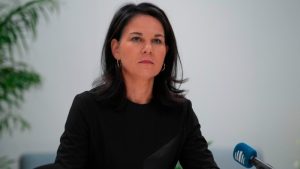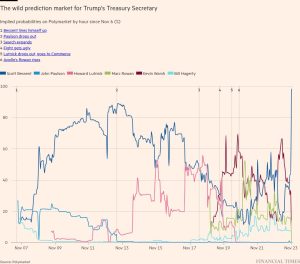Can the French make good wine in California?
The first French wine producer to set up shop in California was Georges de Latour, who founded Beaulieu Vineyard in the Napa Valley in 1903. Since then, French wine producers have played a part in the state’s viticulture. But why have so many flocked to buy American wine estates since 2013?
The modern wave began in 1973 when Moët & Chandon chose Napa Valley as the location of its second non-French sparkling wine facility, the first being in Argentina. Three years later, the Judgment of Paris blind tasting demonstrated that California was producing wines that France’s wine gurus preferred to their own top wines — a moment that passed with surprisingly little comment at the time, but which has since been judged seismic. One of the tasters, Aubert de Villaine of world-famous Domaine de la Romanée-Conti in Burgundy, quietly started joint venture HdV with a Napa grape grower the following year.
Then in 1979 came the shock announcement that Baron Philippe de Rothschild of Bordeaux first growth Ch Mouton-Rothschild, no less, was going into business with Robert Mondavi of Napa Valley to produce a California wine in the image of red bordeaux. (It would eventually become known as Opus One.) The fact that the Dewavrins, who ran the eminent Bordeaux château La Mission Haut-Brion, decided to buy a wine property in Napa Valley in 1980 eventually led to such a rift in their family that La Mission was put up for sale the next year.
Another wave of French investment in California came soon after François Mitterrand became president in 1981 and his Socialist policies spread doom and gloom in the French business community, especially among those producing champagne. Louis Roederer, Mumm and Taittinger all established sparkling wine outfits in northern California, and Bordeaux’s Christian Moueix laid the foundations of his Dominus Estate in Napa Valley.
But the major wave of French investment has come in the past 11 years. In the vanguard was Artémis Domaines, which made an out-of-the-blue approach to buy Araujo Estate in Calistoga, renaming it Eisele Vineyard. Biodynamic techniques were already firmly established at the California property, while they were still in their infancy at Artémis’s French properties.
Another of Bordeaux’s best-financed wine producers, the owners of luxury fashion house Chanel, acquired St Supéry in 2015, entailing quite a step up the ladder of glamour for this Napa winery. Since then, French investment has come thick and fast, including from the giants of Champagne.
Champagne Louis Roederer went on a buying spree, adding Merry Edwards of Sonoma in 2019 and terroir-driven Diamond Creek Vineyards in 2020 to its initial sparkling wine investment in Roederer Estate. Similarly, LVMH added a majority stake in Napa Valley’s luxurious Colgin Cellars in 2017 and then bought Joseph Phelps in 2022.
So why has there been such a transfer of funds from l’Hexagone to the golden state? According to Christian Seely of AXA Millésimes, it decided in 2016 that it wanted to buy in Napa because, “It’s rather logical and quite interesting to see somewhere else that makes great Cabernet but is very different.”
And transatlantic transactions have not been restricted to northern California. Several Burgundy producers, including Drouhin and Louis Jadot, have invested in Oregon, intrigued by the challenge of applying their expertise in Pinot Noir and Chardonnay to the west coast. More recently, Étienne de Montille, from one of Burgundy’s most famous families, decided that “having another hectare of a [Burgundy] Premier Cru would not move us forward. So [we thought] let’s go outside of our comfort zone.” They looked all along the west coast of the US, eventually plumping in 2017 for Sta Rita Hills in one of the coolest parts of Santa Barbara County for their impressive Racines label.
But experimentation, and the realisation that France may not have a monopoly on fine wine production, are far from the only drivers of the current phenomenon. French wine producers, especially those in Bordeaux, are becoming increasingly frustrated by their distance from their end consumers. Not only does this mean they don’t know enough about them, it also involves handing over part of their potential income to intermediaries. The California model of selling wines direct to consumers, via wine clubs, mailing lists and preferably on allocation, has become increasingly attractive to them.
Furthermore, owning an American wine producer gives them the precious right to sell their French wines direct to American consumers.
The most recent purchase, by France’s powerful Bouygues family, has been on the east coast. Lost Mountain, a small but successful venture in Virginia, is the latest recruit to a wine group now known as Eutopia Estates. General manager Pierre Graffeuille explained to me over email why they are so pleased to have a foothold in the American market. “Owning a vineyard in the US gives direct access to one of the largest wine markets in the world. Moreover, US wineries have a great expertise in ‘direct to consumers’ through their wine club and hospitality programmes which can be inspiring.”
And it goes without saying geographical diversification is particularly useful when the weather is increasingly unpredictable.
Recently, I attended a daring tasting in London hosted by one of these new arrivals. Florence Cathiard of Ch Smith Haut Lafitte, which has owned Cathiard Vineyard in Napa Valley since 2020, invited 10 of us to a blind tasting of their 2021 vintage. Their two wines were up against eight stars of the Napa Valley Cabernet firmament, including Screaming Eagle and Scarecrow ($2,450 and $824 a bottle, respectively).
The group ranking is in the box, but it differs slightly from mine. I chose the least expensive wine, Founding Brothers from the Cathiard Vineyard, as my favourite, as did Anthony Rose of The Independent, who has been writing about wine for almost as long as I have.
Florence, who also tasted the wines blind, was mightily relieved to see Cathiard Vineyard’s principal wine do so well. Her husband, Daniel, less convinced by the tasting exercise and possibly nervous about the outcome, stayed at home.
But the tasting, and my experience of the produce of virtually all of the names mentioned, seems to suggest that French wine producers are capable of making excellent wine in the US, while being able to sell their French wines more profitably to millions of American consumers.
Referring to the traditional sales system for Bordeaux wines, the Place de Bordeaux, Florence Cathiard admitted that she and her husband had “made our small fortune in wine thanks to the Place, but now that interest rates have risen, the Place is sick”. She mimed slashing her throat. “My niece is now running our Napa boutique, selling our wines at the same price as the Place but at a much higher margin.”
I wonder how many more French vignerons are currently scouting westwards.
Class of 2021: Cathiard’s Napa Cabs vs some of the neighbours
At the blind tasting, the 10 tasters were asked to rank the wines from one to 10. The list shows the average ranking of each wine, with Continuum being the highest-ranked overall. For the tasting, Florence Cathiard chose 2021s that had already been released and had garnered especially high scores from critics.
Tasting notes, scores and suggested drink dates on Purple Pages of JancisRobinson.com. International stockists on Wine-searcher.com
Follow @FTMag to find out about our latest stories first and subscribe to our podcast Life and Art wherever you listen
#French #good #wine #California




